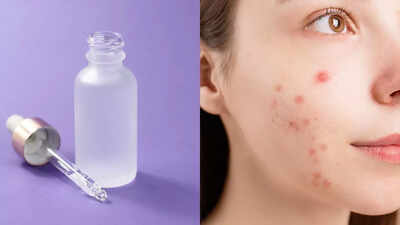ARTICLE AD BOX

Salicylic acid is a popular over‑the‑counter beta‑hydroxy acid (BHA) that’s highly effective for treating acne and improving skin texture. It works by deeply exfoliating inside the pores, reducing oil production, and calming inflammation, making it a go‑to ingredient for oily, acne‑prone skin.
Dermatologists and skincare experts often recommend salicylic acid for clearing blackheads, whiteheads, and preventing breakouts. Found in cleansers, toners, serums, and spot treatments. It delivers results in about 4 - 6 weeks.Safe for most skin types, when used properly, salicylic acid can be a powerful ally in your skincare routine.
What is salicylic acid and how it works for acne
Salicylic acid is a BHA derived from plants like willow bark. Unlike AHAs, it’s oil-soluble, allowing it to penetrate deep into clogged pores to dissolve dead skin cells and oil. Its keratolytic and comedolytic actions mean it exfoliates skin gently and helps unclog pores, preventing acne formations. Salicylic acid works in several ways to help combat acne:
- Unclogs pores: Salicylic acid helps to unclog pores by dissolving the debris that clogs them, including dead skin cells and excess oil.
- Reduces inflammation: Salicylic acid has anti-inflammatory properties that help to reduce redness and swelling associated with acne.
- Exfoliates skin: Salicylic acid helps to exfoliate the skin, removing dead skin cells and promoting cell turnover.
- Prevents future of acne: Salicylic acid can help to prevent future breakouts by keeping pores unclogged and reducing the amount of bacteria that can cause acne.
Benefits of salicylic acid for acne
The benefits of salicylic acid for acne are numerous:
- Reduces acne lesions: Salicylic acid can help to reduce the number and severity of acne lesions.
- Improves skin texture: Salicylic acid can help to improve skin texture by removing dead skin cells and promoting cell turnover.
- Fades acne scars: Salicylic acid can help to fade acne scars by promoting collagen production and improving skin texture.
- Suitable for all skin types: Salicylic acid is suitable for all skin types, including sensitive skin.
How to use salicylic acid for acne
- Start with a low concentration: Start with a low concentration of salicylic acid (around 0.5-1%) and gradually increase as your skin becomes more tolerant.
- Use it as a spot treatment: Use salicylic acid as a spot treatment to target individual acne lesions.
- Use it as a preventative measure: Use salicylic acid as a preventative measure to keep pores unclogged and reduce the risk of future breakouts.
Precautions and side effects to consider before using salicylic acid
While salicylic acid is generally safe and effective, there are some precautions and side effects to be aware of:
- Dryness and irritation: Salicylic acid can cause dryness and irritation, especially if used in high concentrations or too frequently.
- Sensitivity to the sun: Salicylic acid can make skin more sensitive to the sun, so be sure to use a broad-spectrum sunscreen with at least SPF 30.
- Avoid using with other exfoliants: Avoid using salicylic acid with other exfoliants, such as alpha hydroxy acids (AHAs) or beta hydroxy acids (BHAs), as this can increase the risk of irritation.
Disclaimer: This article is for informational purposes only and does not substitute professional medical advice. Always consult a dermatologist before starting or changing your skincare routine, especially if you have sensitive or acne-prone skin.Also read | Top benefits of Vitamin C for your skin: Brighten, hydrate and fight aging naturally



.png)
.png)
.png)
















 1 week ago
7
1 week ago
7









 English (US) ·
English (US) ·